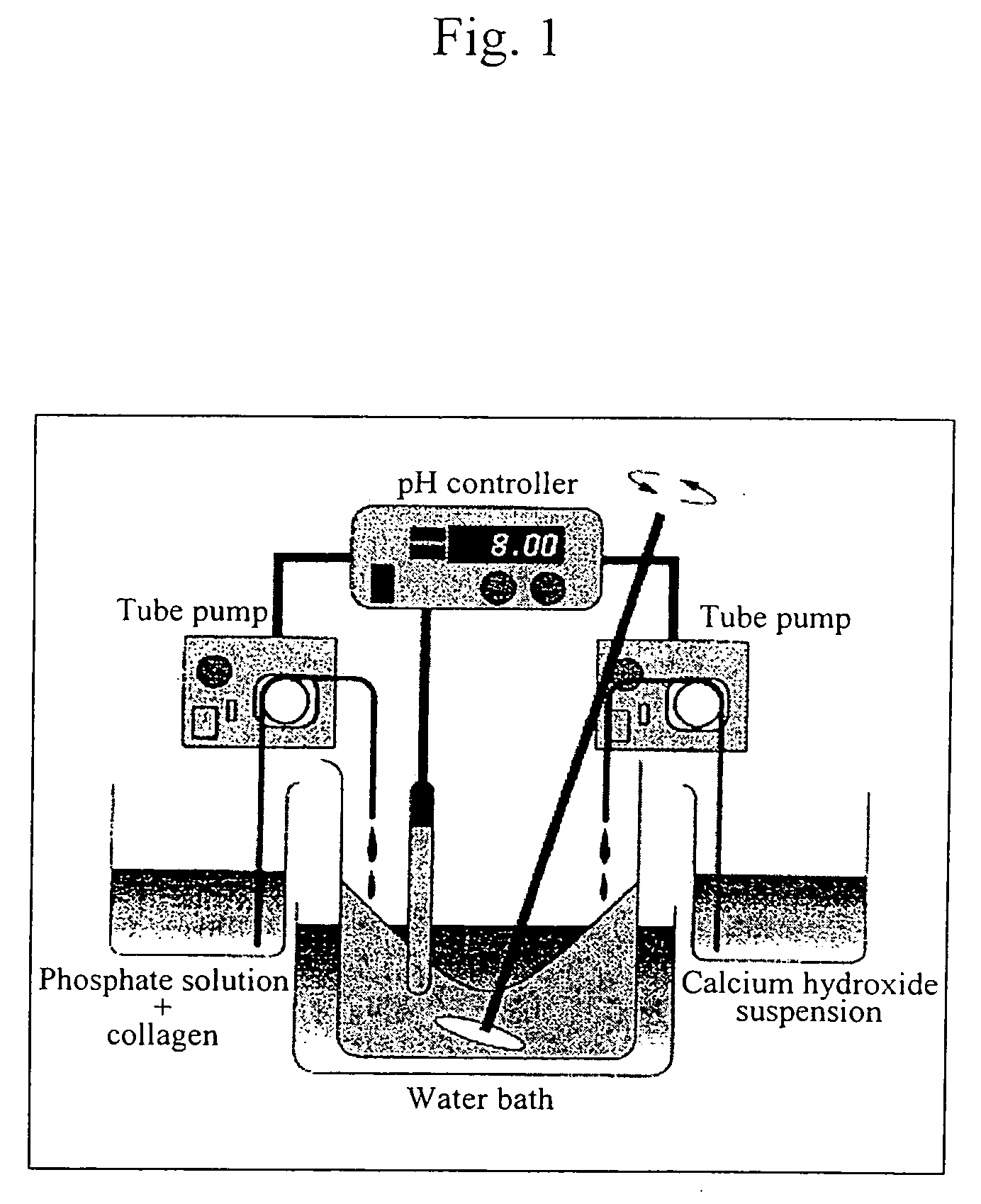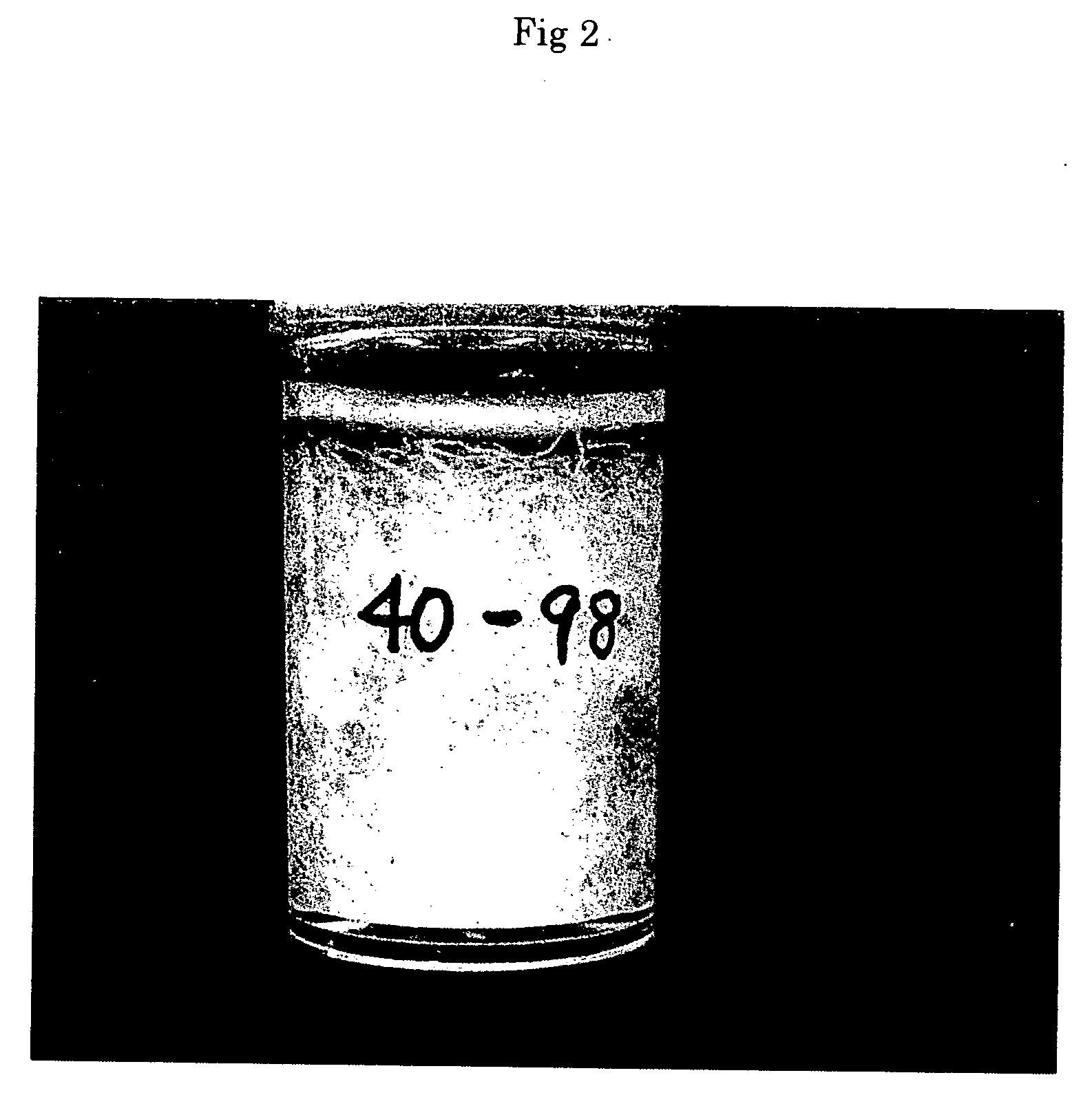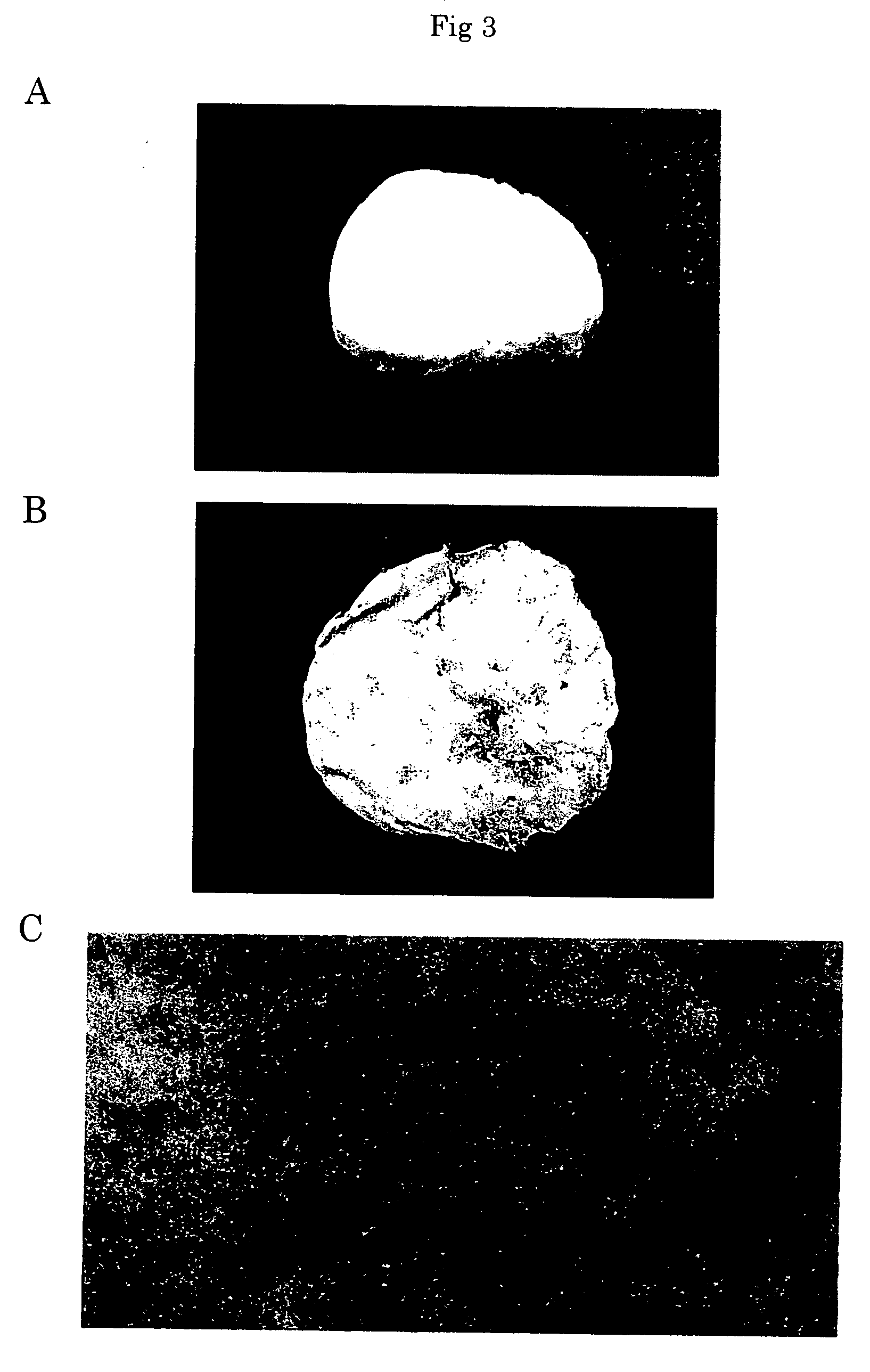Organic/inorganic composite biomaterials and process for producing the same
a biomaterial and composite technology, applied in the field of organic/inorganic composite biomaterials, can solve the problems of inability to provide structures or properties similar to those of natural bones, the amount of hap and collagen can be obtained in a limited amount, and the simple combination of hap and collagen cannot provide the same structure or properties as natural bones, so as to achieve bone conductivity, bone inductivity, and bone induction. the effect of sustaining drug releas
- Summary
- Abstract
- Description
- Claims
- Application Information
AI Technical Summary
Benefits of technology
Problems solved by technology
Method used
Image
Examples
example 1
Examination of Starting Material Concentration
1. Testing Method
The flow rate of calcium hydroxide was fixed at 15 ml / min, and the concentrations and the amounts of starting materials, i.e., a calcium hydroxide suspension and an aqueous phosphoric acid solution, were varied as shown in Table 1. The flow rate of an aqueous phosphoric acid solution was adjusted so that dropwise addition of a calcium hydroxide suspension was completed at substantially the same time as that of an aqueous phosphoric acid solution. The amount of atelocollagen (extracted from porcine dermis, Nitta Gelatin Inc.) to be added to the aqueous phosphoric acid solution was constantly 2.01 g, and pure water in the same amount with the calcium hydroxide suspension had been previously placed in a reaction vessel. Under the aforementioned conditions, the ratio of the weight of hydroxyapatite (HAp) to that of collagen (Col) becomes 80:20 when an ideal reaction takes place.
The reaction was carried out at 40° C. at...
example 2
Examination of the Flow Rate
1. Testing Method
Subsequently, the influence of the flow rate upon self-organization of the composite was tested using calcium hydroxide suspensions of two different concentrations.
A) Low Concentration Calcium Hydroxide (100 mM)
An aqueous phosphoric acid solution (30 mM, 1,600 ml) comprising 800 ml of a 100-mM calcium hydroxide suspension and 2.01 g of pepsin-treated atelocollagen (extracted from porcine dermis, Nitta Gelatin Inc.) was used as a starting material. Pure water (800 ml) was previously placed in the reaction vessel, the flow rates were varied between 8 ml / min and 120 ml / min, and the composite was prepared in the same method as in Example 1. Under the above-described conditions, the ratio of the weight of hydroxyapatite (HAp) to that of collagen (Col) becomes 80:20 when an ideal reaction takes place.
B) High Concentration Calcium Phosphate (400 mM)
An experiment that was similar to the one in A) was carried out using, as starting mat...
example 3
Preparation of Sheet-Like Organic / Inorganic Composite Biomaterials
Composites were prepared in the same method as in Example 1 using 800 ml of 100 mM calcium hydroxide suspension and 1,600 ml of aqueous 30 mM phosphoric acid solution (including 2.01 g of atelocollagen) at a flow rate for calcium hydroxide of 15 ml / min (with an average flow rate of 7.5 ml / min) in the presence of 800 ml of pure water in the reaction vessel. The resulting sediment was flattened and fixed in that state. Thus, the sheet-like organic / inorganic composite biomaterials were obtained.
FIG. 3 is a photograph showing the obtained sheet-like solid substance (diameter: 14 cm; B represents the entire backside and C represents the enlarged surface) and a porous body solidified in a usual method (diameter: 25 mm; A).
The sheets were very strong, and the organic / inorganic composite biomaterials of the present invention having long fibers were considered to be suitable for the form of sheets.
PUM
| Property | Measurement | Unit |
|---|---|---|
| Temperature | aaaaa | aaaaa |
| Temperature | aaaaa | aaaaa |
| Flow rate | aaaaa | aaaaa |
Abstract
Description
Claims
Application Information
 Login to View More
Login to View More - R&D
- Intellectual Property
- Life Sciences
- Materials
- Tech Scout
- Unparalleled Data Quality
- Higher Quality Content
- 60% Fewer Hallucinations
Browse by: Latest US Patents, China's latest patents, Technical Efficacy Thesaurus, Application Domain, Technology Topic, Popular Technical Reports.
© 2025 PatSnap. All rights reserved.Legal|Privacy policy|Modern Slavery Act Transparency Statement|Sitemap|About US| Contact US: help@patsnap.com



